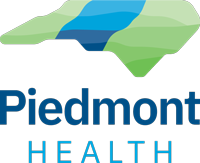
John supports his family by driving a truck, but at one point he was close to losing his truck drivers’ license due to his health; he has diabetes.
John is a patient at the Moncure Community Health Center, so he does not ignore his diabetes. But eating right and adopting other healthy habits to help control diabetes was easier said than done for John, especially on the road.
Fortunately for John, his care at Moncure went beyond medical care from a doctor; he also was treated by a Behavioral Health Consultant (BHC).
Together with John’s wife, the BHC used motivational interviewing strategies to uncover what makes it hard for John to stay on track with his health. Through close follow-up in person and by phone John’s numbers look better than they had in five years. He retained his license.
This success story illustrates the comprehensive approach Piedmont Health Services strives for as part of its behavioral health program.
“Diabetes is a complex issue and we ask patients to make lots of behavioral changes, and that’s stressful,” said Julie Austen, PhD, the BHC at Moncure. “Behavioral health can help patients manage their emotions and behaviors related to diabetes, just like John did.”
Piedmont Health’s Behavioral Health Program began after a grant from the federal Health Resources and Services Administration (HRSA) in 2014, according to Beth Childs, MSW, LCSW, Piedmont Health Director of Behavioral Health.
The program, which is in effect at Moncure and eight other Piedmont Community Health Centers, recognizes the reality that a lot of care in a primary care setting cannot be easily separated into mental and physical, Childs said.
“Half of care for mental health issues is done within the primary care setting by providers who don’t necessarily have as much training with emotional and psychiatric issues as they do with things such as blood pressure and diabetes,” she said. “Piedmont Health recognized this need to address psychiatric issues utilizing a more specialized approach in a primary care setting. Folks who have chronic medical conditions such as: diabetes, heart disease and asthma have much higher rates of depression and anxiety than people who don’t have those problems, so integrating physical and mental health care is an opportunity to address multiple patient issues as they all have significant impacts to patient health.”
When patients visit Piedmont’s Community Health Centers, they are given a quick screening for depression. This is done by using a tool called a Patient Health Questionnaire 9 (PHQ9) by a medical assistant. Positive screens trigger involving the BHC. The BHC intervention could bring out a host of serious problems, ranging from emotional disorders to stress to bipolar disorder.
Another goal of integrating behavioral health in a primary care setting is to improve the efficiency of medical care, Childs said. These behavioral health interventions allow the primary care provider to devote their time with the patient to physical health needs while the BHC can focus on emotional health and “health behaviors” — potential behaviors that are directly affecting a patient’s physical health such as substance abuse or failure to take medications or tobacco use.
“If there is something going on with the patient, we can intervene and let the provider focus on the physical health aspects,” Childs said. “…We work with the pharmacists, we work with the providers, we work with the medical assistants, nurses, care managers — we all work together as a team. It’s a team-based model to provide care based on the patients’ needs.”
Piedmont Health’s BHCs get a variety of training from such sources as the Substance Abuse and Mental Health Services Administration.
Additional benefits of Piedmont Health’s behavioral health program include providing care to patients who experience cultural barriers to seeking mental health help in the community, Childs said. These individuals are more likely to seek care within their primary care setting for emotional issues. Additionally, there is often a low availability of mental health services in many of the rural communities that Piedmont serves, she pointed out.
“In 2017, we had almost 4,000 encounters,” Childs said. “In 2018 we will be able to provide more services to more patients due to an increase in our number of BHCs. We are so excited to see how our team can positively impact the lives and health of our patients.”
